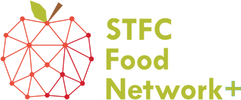Fish for all - How digital marketplaces could radically improve Farmed fish distribution in Kenya12/7/2023 A project supported by a STFC Food Network (SFN) Scoping Project Grant has demonstrated how digital technologies could help create a thriving farmed fish economy in Kenya – supporting livelihoods and increasing access to healthy protein.
2 Comments
|
AuthorJune 2024 - Archives
June 2024
Categories |
- Home
- Webinars and Events
- About the SFN+
- News
- Blog
- Expert Working Groups
- Funding
-
Publications
- Bioeconomy positioning paper
- SFN+ 5th Annual Conference
- OMM Policy Report
- ‘Multi-Stakeholder International One Day Workshop on Organic Agri-Food Value Chains for Net Zero’ Report
- SFN 2050 UK Net Zero Food report
- Sustainable Cold Food Chain Booklet
- Food Sensing Technologies for Safe and Nutritious Food
- Sustainable urban and vertical farming
- Projects
- Join/Contact Us

 RSS Feed
RSS Feed


